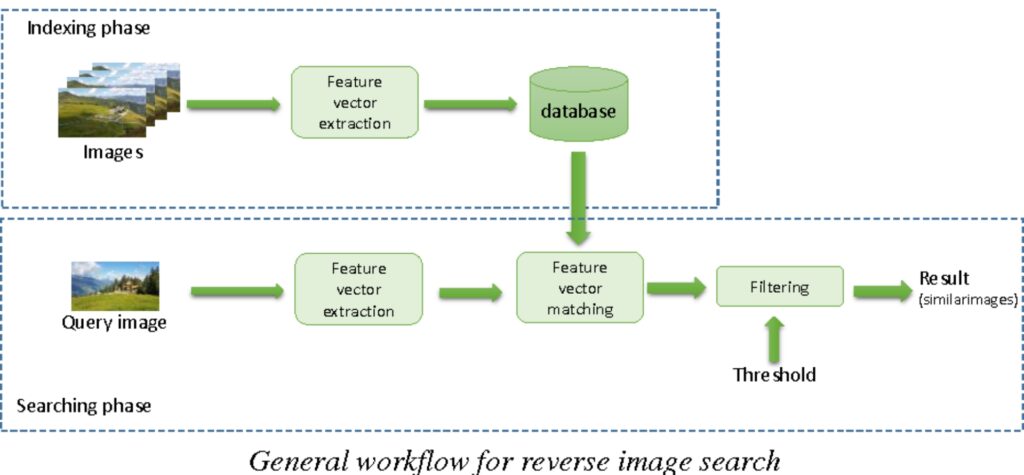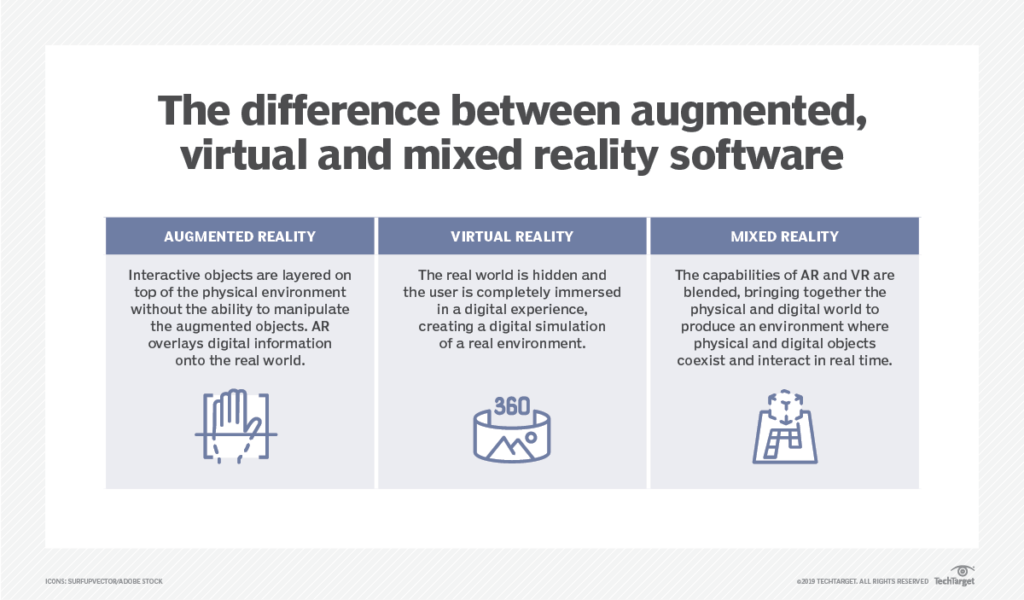While AI has brought significant advancements in various domains and landscapes, you can’t overlook its role in the web world, especially the domain of search engines.
Search engines have started using AI bots to understand the relevance of content published on various websites. This understanding of relevance allows search engines to categorize and index content better. These bots also figure out the relevancy of images posted on web pages with published content.
In addition to indexation and categorization, AI has also found its application in various web search methods. Take voice search as an example. Machine Learning, the subset of AI, is used to understand the voice search queries given by users and search the web using obtained data.

The reverse image search method is also an example. It takes the help of the CBIR (Content-Based Image Retrieval) algorithm, which uses AI, Machine Learning, and Computer Vision.
Since its introduction, the reverse photo search method has been frequently used. Many people prefer performing web searches using this method to get apt results.
According to recent research stats, over 30% of searches online are performed using the reverse image lookup method. While this web search method is quite popular, its future looks even more promising.
This article discusses the future of reverse image search and its applications that will make the lives of average internet users easier in the coming days.
Further details are given below.
Improved Efficiency
As mentioned earlier, the reverse image search process revolves around AI and Machine Learning. These technologies play their part in recognizing patterns, colors, shapes, and objects featured in images. Currently, this method doesn’t offer 100% accuracy. However, with improvements in AI and Machine Learning, we can expect considerable enhancement in the efficiency of the reverse picture search method. Deep Learning, a subset of Machine Learning, is used to imitate the working of neural networks in the human brain.
Currently, some areas for improvement in Deep Learning data models limit the efficiency of the reverse photo image search process. However, with the introduction of more advanced and sophisticated Deep Learning data sets, the likeliness of its improved efficiency is obvious. An advanced image finder with sophisticated deep-learning data sets will quickly identify subtle features and previously undetectable image patterns.
Enhanced Capabilities
The image reverse search method currently finds products or items featured in an image. You can expect significant advancement in its capabilities. Many online shoppers use visual search to find their desired merchandise online. An image search engine allows them to upload or import an image query and find visually similar results. The results mainly displayed features of similar products.
In the coming days, we expect reverse photo search to identify other recognizable features in the image. Especially in the case of reverse picture search for online shopping, you may find an image search engine identifying the brands and styles featured in images. This advancement can revolutionize the ecommerce field as users will easily identify the particular vendor and visit it directly to buy their desired products without straying elsewhere.
Integration with Other Advanced Technologies

We have heard much about AR (Augmented Reality) and VR (Virtual Reality). These technologies have found their use in multiple places. As the reverse image search method advances, you can expect its integration with VR and AR for enhanced efficiency and accurate search results.
We expect the incorporation of image reverse search with AR and VR to help users utilize their environments and search for required details or imagery. In addition, the advancement of reverse photo search may also enhance its integration with social media and other platforms for enhanced search and tracking of visual content.

Lifeline of Ecommerce
While the reverse image search method has already played a huge part in the swift growth of the ecommerce industry, we can expect more from it in the future.
We know that many leading ecommerce platforms have already introduced visual search features to make consumers’ lives easier and help them find their desired ecommerce merchandise easily.
There is still more to come. Integrating reverse image search with social media will work wonders as mentioned earlier.
After viewing trends on social media, consumers who shop for a product online will find it considerably easier to access the vendor site selling the product. This phenomenon will happen due to the ability of social media platforms to use reverse image search and tag brands or stores offering particular products for sale. Moreover, you will see every online ecommerce store optimizing product images for photo lookup and introducing visual search features.
In the End
While the reverse image search method is already seen as a groundbreaking innovation in the web world, it has a promising future. You will see significant improvement in its efficiency and capabilities. Moreover, you will also see its integration with other advanced technologies like AR and VR, having AI at heart.
This integration will make the life of common internet users easier. Finally, you will also see reverse image search becoming the lifeline of ecommerce. Hence, this innovative web search method packs a promising future. Hopefully, you have learned a lot about future insights of reverse picture search through this article!

